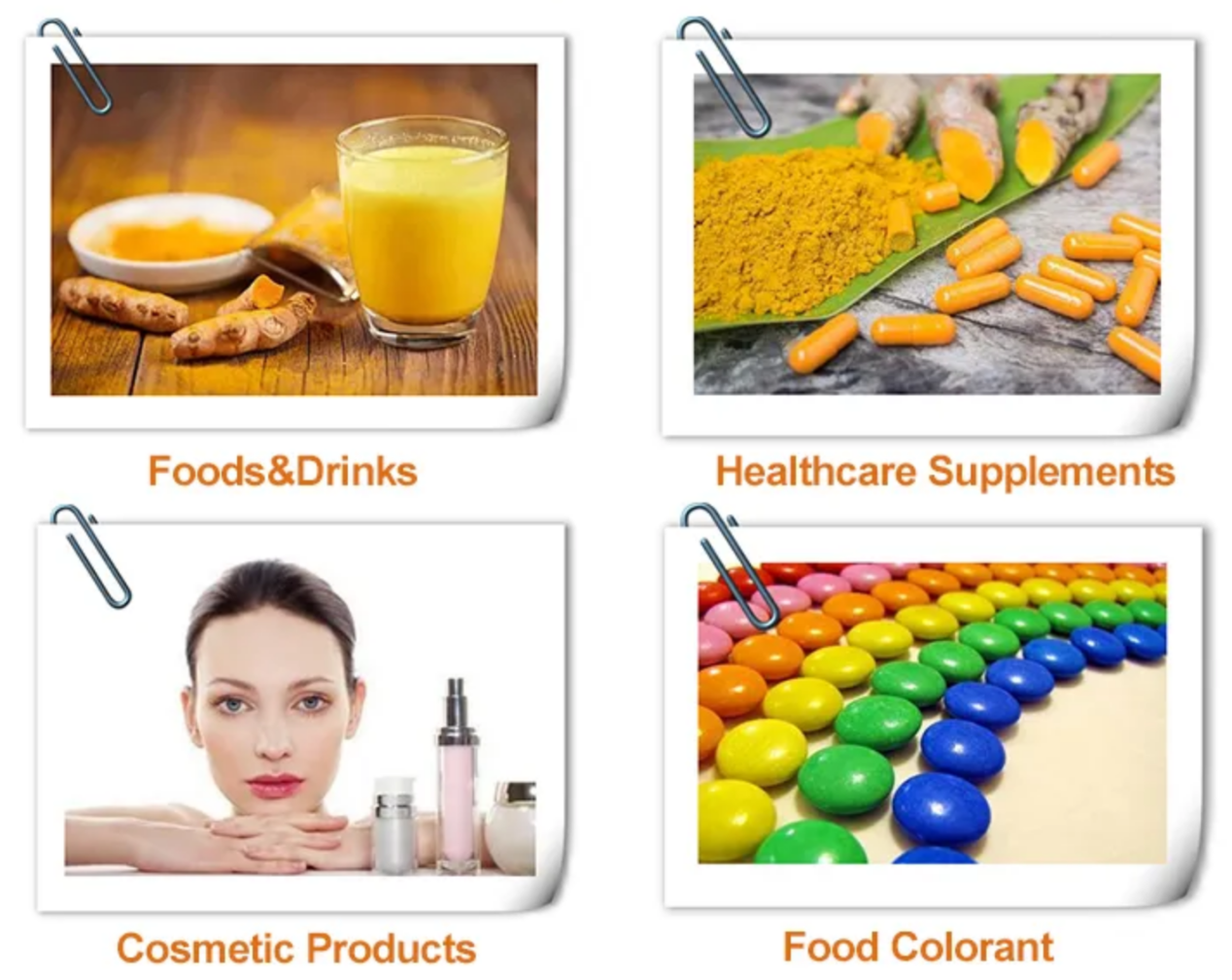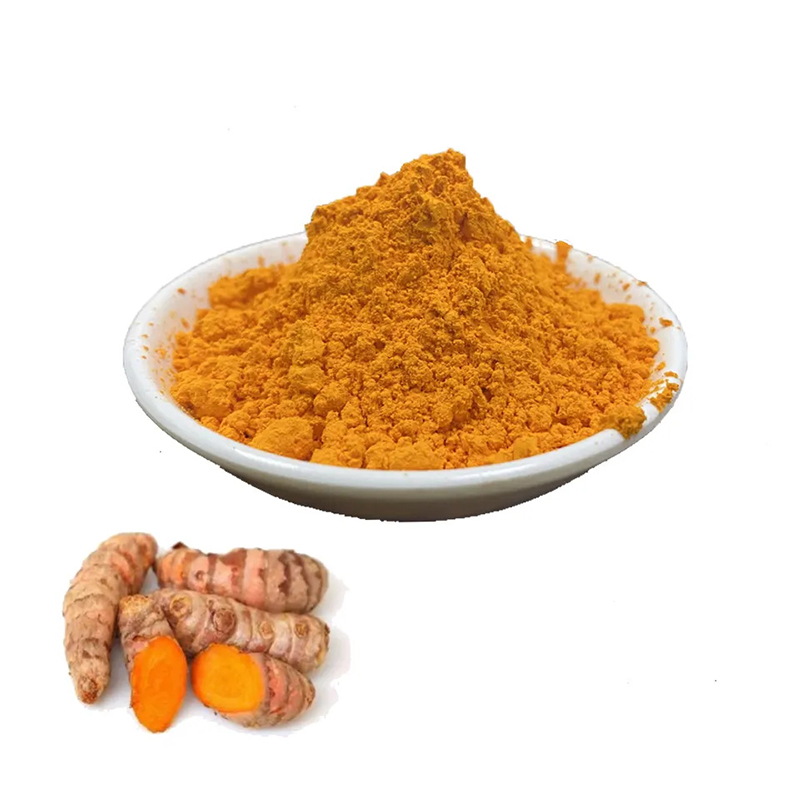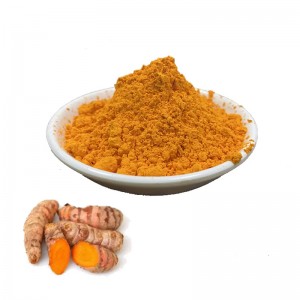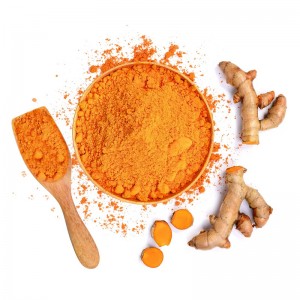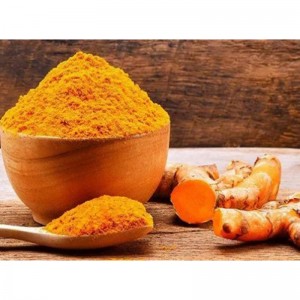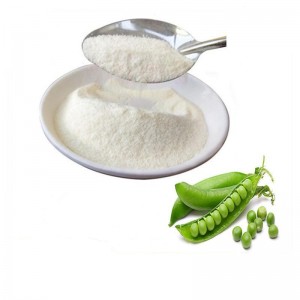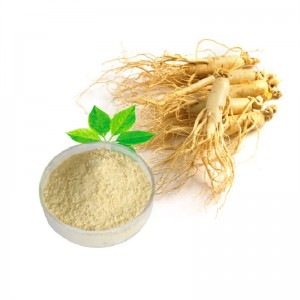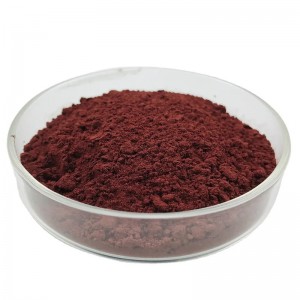| Basic Information | |
| Product name | Curcumin |
| Grade | Food grade |
| Appearance | Orange crystalline powder |
| Assay | 95% |
| Shelf life | 2 years |
| Packing | 25kg/drum |
| Characteristic | Stable, but may be light sensitive. Incompatible with strong oxidizing agents. |
| Condition | Sealed,and store in a cool(60-70F),dry area(35-62% relative humidity). Do not freeze, and keep away from direct light. |
Description Of Product
Curcumin, also known as turmeric pigment or acid yellow, is a natural phenolic antioxidant extracted from the roots and stems of ginger plants such as turmeric, turmeric, mustard, curry, and turmeric. Its main chain consists of unsaturated aliphatic and aromatic groups, and it is a diketone compound. It is a commonly used seasoning and edible pigment, non-toxic, with a chemical formula of C21H20O6.
Curcumin is an orange yellow crystalline powder with a slightly bitter taste. It is insoluble in water and ether, soluble in ethanol and propylene glycol, and easily soluble in glacial acetic acid and alkaline solutions. It appears reddish brown in alkaline conditions and yellow in neutral and acidic conditions.
Curcumin has strong stability towards reducing agents and strong coloring properties. Once colored, it is not easy to fade, but it is sensitive to light, heat, and iron ions, and has poor resistance to light, heat, and iron ions.
Curcumin is a natural compound mainly used in food production for coloring products such as intestinal products, canned goods, and sauce braised products. Curcumin has the effects of reducing blood fat, anti-tumor, anti-inflammatory, cholagogic, antioxidant, etc. In addition, some scientists have found that curcumin is helpful in the treatment of drug-resistant tuberculosis.
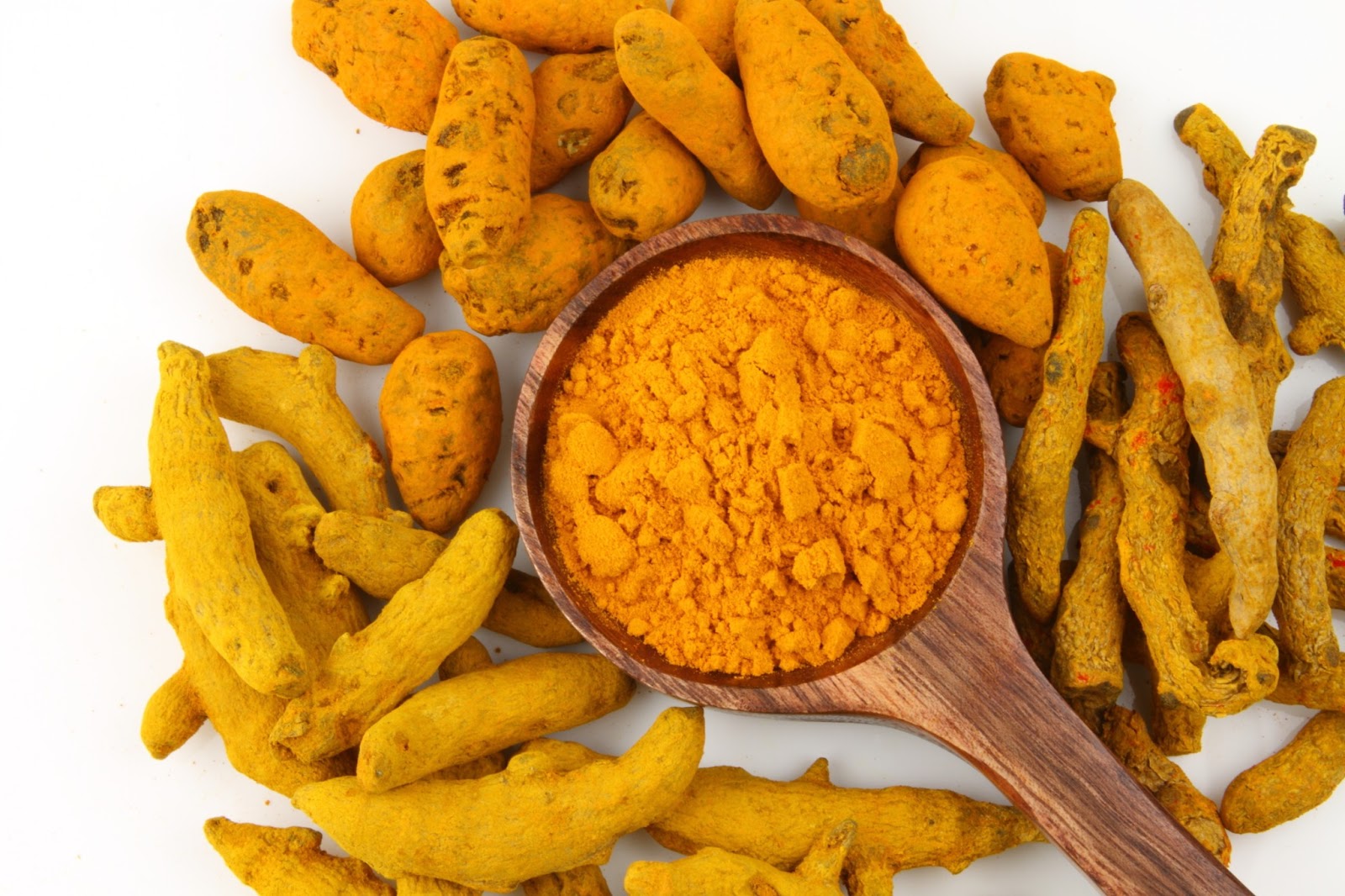
Function Of Product
Curcumin, the active component of turmeric (Curcuma longa), has been regarded as an anti-inflammatory and antioxidant agent . Particularly, it can scavenge reactive oxygen species, such as hydroxyl radicals, super oxide anion radicals, and nitrogen dioxide radicals. Additionally, it serves as an anti-inflammatory by down-regulating the production of pro-inflammatory cytokines (e.g., IL-1 and TNF-α) and inhibiting the activation of specific transcription factors (e.g., NF-κB and AP-1). Curcumin also demonstrates antiproliferative properties. Specifically, it inhibits UV radiation-induced skin cancer in SKH-1 hairless mice and reduces UVB-induced matrix metalloproteinase-1/3 expression in human dermal fibroblasts via MAPK-p38/JNK pathway suppression.
Curcumin, is an anti-inflammatory molecule in the turmeric root, a relative of ginger. Turmeric has been used for thousands of years as a medicinal preparation and a preservative and coloring agent in foods. Curcumin was isolated as the major yellow turmeric; chemically diferulomethane, and has a polyphenolic molecular structure similar to other plant pigments
Curcumin contains antioxidants, which protect cells against damage caused by free radicals. it is mainly used in cosmetic industry.
Curcumin mainly used in many foods as a coloring in mustard, cheese, beverages and cakes.As pigments, food additives of seasoning.
Major Application Of Product
Curcumin has been widely used in the food industry as a common natural pigment for a long time. It is mainly used for the dyeing of canned food, sausage products and soy sauce products. The amount of curcumin used is determined by normal production needs. The product form of functional food with curcumin as the main component can be general food or some non-food forms, such as capsules, pills or tablets. For general food form, some yellow pigmented foods can be considered, such as cakes, sweets, beverages, etc.
Curcumin is a food additive approved by the Codex Alimentarius Commission of the Food and Agriculture Organization of the United Nations (FAO/WHO-1995). The newly promulgated "Standards for the Use of Food Additives" (GB2760-2011) stipulates that frozen drinks, cocoa products, chocolate and chocolate products and candies, gum-based candies, decorative candies, toppings and sweet sauces, batter, coating powder and frying powder , The maximum usage of curcumin in instant rice and noodle products, flavored syrup, compound seasoning, carbonated drinks and jelly is 0.15, 0.01, 0.7, 0.5, 0.3, 0.5, 0.5, 0.1, 0.01, 0.01 g/kg, respectively, margarine and its similar products, cooked nuts and seeds, fillings for grain products and puffed foods can be used in moderation according to production needs.
